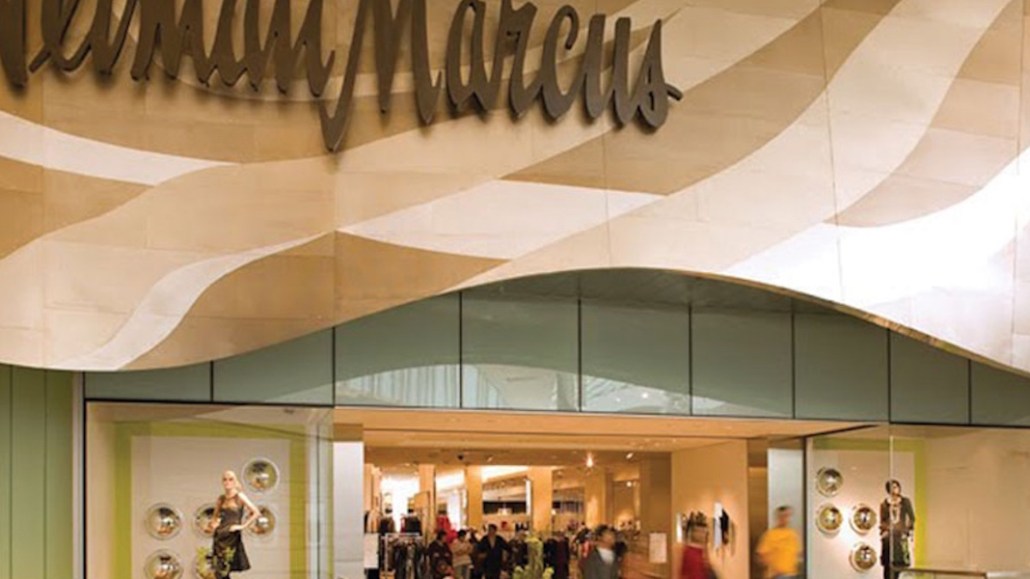The Luxe Lab at Neiman Marcus signals a shift in focus for department stores

As sales and foot traffic decline, department stores are looking to new designers and brands to drive people back in.
Last week, Neiman Marcus announced the arrival of Luxe Lab, a boutique-like collection of merchandise picked from a group of “forward-thinking” designers, including Simone Rocha, Nour Hammour and Francesco Scognamiglio. According to a Neiman Marcus spokeswoman, the goal of the Luxe Lab is to offer a selection of pieces from designers outside of the typical lineup, establishing the retailer as an authority for up-and-coming fashion. In the first assortment, which is online and available in 14 Neiman Marcus stores, a handful of the items are exclusive to the retailer.
“Department stores, for a lot of today’s customers, have too much inventory,” said Jane Halli, a retail analyst at her firm Jane Halli and Associates and a former buyer. “All of them need to edit their assortment; it’s the only way to differentiate themselves at this point.”
Across the board, department stores are adopting merchandising habits more similar to boutiques than big-format retail, in response to changing customer behavior and a challenging retail climate. Nordstrom’s vp of creative projects, Olivia Kim, recruits five designers every season for the Nordstrom Space Lab, considered an incubator for emerging designers. Kim also curates “pop-ins,” temporary in-store pop-ups that feature global designer brands not carried by Nordstrom on a regular basis. Bergdorf Goodman has teamed up with streetwear brands like Kith to reach new shoppers, and also runs an in-store Bergdorf Goodman Lab to promote designers. Meanwhile, Macy’s is working with designers including Anna Sui and Cynthia Rowley to create exclusive collections.
“What unifies the strategy here is the focus on combining new product assortments with experiences,” said Malinda Sanna, founder of the agency Spark. “Everyone’s trying something different.”
Neiman Marcus is in need of the boost. In 2016, it posted its first annual loss in six years, with same-store sales falling 5.6 percent. In addition to reinvigorating merchandise through Luxe Lab, Neiman Marcus has looked to partnerships to drive foot traffic. Last year, it began opening Rent the Runway locations inside of its stores, in order to push purchases of accessories and shoes alongside rentals. The company also bulked up its activewear and streetwear collections to appeal to a more casual customer.
With Luxe Lab, the retailer is hoping a collection of cutting-edge designers will attract customers who have grown weary of similar assortments at every store. At the same time, mainstream brands that have become popular at department stores, like Michael Kors and Coach, have begun reducing the number of items they sell through wholesale channels.
“These [Luxe Lab] designers have followings already, and it’s serious shoppers,” said Halli. “It’s right in line with the sneakerheads — the people who look for the latest. This is a designer customer they’re trying to reach.”
Halli said the most important thing Neiman Marcus, and any department store, can do is make buying decisions that respond to what’s popular among customers, rather than deciding based on merchandising deals. The Luxe Lab is also rolling out right as designers are showing their newest collections on the runway, which will help to drive buzz around the featured collections. Neiman Marcus CEO Karen Katz has been an outspoken supporter of designers opting for a see-now-buy-now schedule, which would align collections with customer shopping habits.
“We constantly challenge the brands we do business with for newness, for buy-now-wear-now and for the right attitude of product the customer is looking for,” she said during a call with investors this year, specifically naming sneakers and a more casual style of dress as fitting trends. “We’re on top of different fashion trends and different brands that are performing well. Those are the things that our merchants are doing best — attacking the vein of what can resonate with the customer.”
More in Marketing

Pitch deck: How Amazon is recasting Twitch as a core part of its CTV pitch
Amazon is positioning Twitch as a defining asset in its CTV ambitions.

Netflix transforms former mall department stores into experiential venues
The location in Dallas opens this week, and one at the King of Prussia mall near Philadelphia opened last month.

Future of Marketing Briefing: AI has created a new talent paradox in programmatic agencies
The job isn’t execution anymore. AI handles that. The job is judgement.









